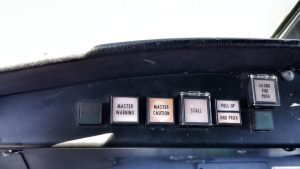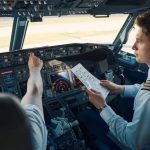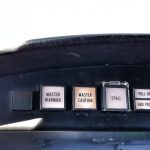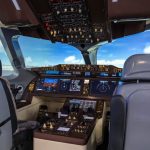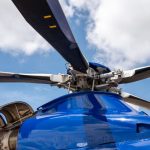Pilot Training and Technology
Approximately every day, somewhere in the world, a plane is forced to divert due to smoke or fire in the cockpit. The Canadian Transportation Safety Board warns that pilots only have 17-19 minutes to land once a fire warning is activated. After that, pilot training mitigation is less effective, and survival becomes highly unlikely.
Imagine flying over mountains with limited runway options or dealing with adverse weather conditions. Picture flying at night, having to power down everything except the battery to follow fire procedures. These scenarios aren’t easy when it comes to onboard fires. That’s why using technology to give us a fighting chance is crucial, even though technology may have caused the issue in the first place.
What’s surprising is the sheer number of incidents happening globally daily. But when you consider it, it starts making sense. It’s not engine fires or faulty wiring causing smoke and fire; it’s the abundance of lithium batteries carried onboard – sometimes two or three per passenger. These batteries power all sorts of devices like laptops and smartphones, and they have the potential to explode or cause extreme heat on an aircraft.
Pilot and Company Actions
At the very least, we should ensure that every aircraft has a fire containment bag that meets UL 5800 standards. Lithium Fire Guard offers the PG100, a certified case capable of containing a battery in thermal runaway condition for hours. The product includes safety equipment like glasses and gloves for handling these devices.
But fires can also be caused by faulty wiring, circuit protection issues, electrical malfunctions, air leaks, and lightning strikes. Once a fire is detected, time becomes critical – within 17 minutes, things can get overwhelming due to damage from heat and smoke as well as toxic fumes. The conditions during flight can exacerbate these risks. Changes in pressure and temperature, as well as vibrations during take-off and landing, can potentially damage batteries and cause them to enter thermal runaway.
Preventing these issues is a matter of careful handling, storage, and monitoring. Companies and pilots who follow their documented procedures can minimize the risk of a battery-related incident during flight. Below are a few tips on some procedures that can help ensure a safer flight.
Pre-Flight Preparations
- Battery Inspection: When applicable, before loading, each lithium-ion battery should be thoroughly inspected for any signs of damage or defects. This includes swelling, leakage or any other abnormality.
- Proper Packaging: Batteries should be packed in protective cases that are designed to prevent short-circuiting. The terminals should be covered to prevent any metallic contact.
- Documentation: Ensure all necessary documentation is in order, including safety data sheets and dangerous goods declarations.
Loading Cargo Safety
- Segregation: Lithium-ion batteries should not be stowed near flammable substances or within reach of any heat source.
- Stowage: Batteries should be stowed in a way that they cannot shift during flight. They should be stored in a cool, ventilated area.
Monitoring Cabin Conditions
- Regular Checks: Regular checks should be done throughout the flight to monitor the batteries’ temperature and condition.
- Alarms: Install smoke detectors and temperature alarms in the cargo hold where the batteries are stored.
Dealing with Potential Battery Issues During Flight
- Emergency Plan: Have an emergency plan in place to deal with any incidents involving batteries. This could include landing at the nearest airport or using fire suppressants.
- Communication: Keep air traffic control informed of any issues so they can provide assistance if necessary.
Mitigating Emergencies
- Fire Suppressants: Aircraft should be equipped with Class D fire extinguishers suitable for lithium-ion battery fires.
- Training: Crewmembers should be trained in how to deal with battery fires, including the use of fire suppressants and the evacuation of passengers if necessary.
Help from Technology
Cockpit visibility can quickly diminish to zero under varying circumstances, making operating flight systems nearly impossible. To address this challenge, companies like VisionSafe and Klatt Works are developing viewing systems specifically designed for pilots facing smoke or fire events.
VisionSafe offers the Emergency Vision Assurance System (EVAS), an FAA-certified device installed in thousands of aircraft worldwide. It provides a clear space of air for pilots to see flight instruments and the front windshield for landing. The unit inflates instantly when smoke or fire is detected, ensuring clear vision both inside and outside the cockpit.
Klatt Works has developed the “Saved” viewing system, integrated into the pilot’s full-face oxygen mask and goggles. This system uses augmented reality technology to display flight information directly on the goggles through head-up display symbology. External views are provided by a camera mounted on the aircraft’s nose.
Regardless of the system or procedures used, having a way to survive smoke or in-flight fire situations is crucial for aviation safety and proper pilot training is essential to ensure a successful outcome. Familiarity with the technology and procedures are critical, and frequent practice increases chances of success during real emergencies.
RELATED CTS TRAINING




